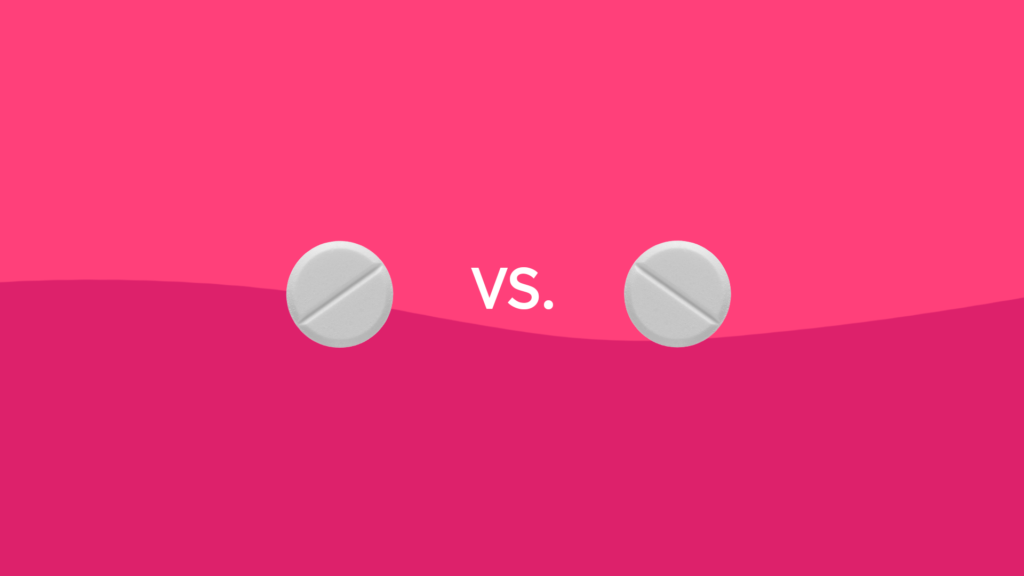Taking Lasix But Not Peeing Much; Lasix makes you pee. However, a lot of people take it and don’t pee much. This is because Lasix only works if you are severely hydrated. If your situation is not severe enough, you will not pee a lot.
Sometimes a medication will make you pee more, sometimes less. It depends on the mechanism of action of the drug. For lasix (furosemide) specifically it is a “loop diuretic” which forces the kidneys to excrete salt and water. So yes, if you have extra body water (edema) it should help remove that. You could also be taking a diuretic for high blood pressure or heart failure which would cause less urine to be produced. This is because the medication helps to regulate your blood pressure by removing water from your system. Anyways, one way or another, this is how these drugs work!
The only thing that’s different is the strength, i.e. 40mg vs 80mg. You should take the 40mg as prescribed by your doctor and it will be fine.
SUBMITTED BY: kittysal
Intermittent catheterization is a procedure that involves draining the bladder using a catheter. It may be required if the person has poor bladder control, overflow incontinence, or urinary retention.
The procedure may need to be performed regularly or occasionally.
Intermittent catheterization can be used to drain urine from the bladder in people with conditions such as:
neurogenic bladder
bladder outlet obstruction
weak bladder muscles
bladder stones
catheters are a common medical device. They enable doctors and nurses to drain fluids from or introduce fluids into the body. They are generally made of plastic and rubber.
When is Lasix Not Working?

When is Lasix not working? When is Lasix not working? When is Lasix not working? When is Lasix not working? When is Lasix not working? When is Lasix not working? When is Lasix not working?
When is Lasix not working? When is Lasix not working? When is Lasix not working?
Lasix (furosemide) treats fluid retention (edema) in people with congestive heart failure, liver disease, or a kidney disorder. Includes Lasix side effects, interactions and indications.
Lasix. lasik eye surgery cost. lasik eye surgery reviews. lasik surgery for eyes. lasik cost for eyes. lasik surgery cost for eyes
Lasix is used to reduce extra fluid in the body (edema) caused by conditions such as heart failure, liver disease, and kidney disease. This can lessen symptoms such as shortness of breath and swelling in your arms, legs, and abdomen.
Lasix may also be used for purposes not listed in this medication guide.
When is Lasix not working?
If you are taking Lasix (Furosemide) and your blood pressure does not come down, and you are continuing to have water retention, it is possible that the medication is no longer working. This can happen when your body becomes resistant to this drug. It may be necessary to change the dosage or try another drug.
It is also important to make sure you are getting enough potassium in your diet. If you are on a low potassium diet, Lasix will not work as well for you. Increasing potassium in your diet will help your body get rid of excess fluid, and may bring down your blood pressure. Your physician can tell you if you need more potassium, or if there is any reason why increasing potassium would not be appropriate for you.
Lasix (Furosemide) has been used with some success in treating edema caused by congestive heart failure, liver disease or kidney disease.
Lasix is a treatment for high blood pressure and fluid retention. This is a common problem for people with kidney disease or high blood pressure. Lasix is not a cure for these conditions but, when used properly, it can help control the symptoms.
Lasix is a diuretic, or water pill. It works by increasing the amount of urine you produce and eliminating excess salt, which helps to lower blood pressure and decrease fluid retention.
Lasix has many side effects that can occur when taking the medication. These include dry mouth, increased heart rate, stomach pain, nausea, and vomiting. If you experience any of these symptoms while taking Lasix, contact your doctor immediately as they could be signs that the medication is not working properly.
If Lasix is not working for you or your symptoms have gotten worse since taking it then talk to your doctor about other treatment options that might be better suited to treat your condition
Lasix (furosemide) is used to reduce extra fluid in the body (edema) caused by conditions such as heart failure, liver disease, and kidney disease.
Lasix is a loop diuretic (water pill) that prevents your body from absorbing too much salt. This allows the salt to instead be passed in your urine.
Lasix is used to treat fluid retention ( edema ) in people with congestive heart failure, liver disease, or a kidney disorder such as nephrotic syndrome.
Lasix is also used to treat high blood pressure (hypertension).
Lowering high blood pressure helps prevent strokes, heart attacks, and kidney problems.
Lasix may also be used for purposes not listed in this medication guide.
What happens if I miss a dose?
Take the missed dose as soon as you remember. Skip the missed dose if it is almost time for your next scheduled dose. Do not take extra medicine to make up the missed dose. What happens if I overdose? Seek emergency medical attention or call the Poison Help line at 1-800-222-1222. An overdose of furosemide can be fatal. Overdose symptoms may include feeling very thirsty or hot, heavy sweating, hot and
Kidney failure complications can include:
Anemia. This occurs when your red blood cell counts drop, meaning that your kidneys aren’t producing enough of the hormone erythropoietin (EPO). EPO is used to make red blood cells.
Bone disease. This can cause your bones to become weak and brittle. Bones are made up of minerals and other nutrients that keep them strong. When you have kidney failure, these minerals and nutrients are not recycled back into your bones. As a result, you may develop a condition known as renal osteodystrophy, which causes bone pain, weakness, and fractures.
Heart and blood vessel disease (cardiovascular disease). Kidney failure can increase the risk for cardiovascular disease because of the buildup of fluid in the body and damage to the blood vessels.
High blood pressure (hypertension). High blood pressure occurs more often in people with kidney failure than in the general population. High blood pressure is also a major risk factor for cardiovascular disease, the leading cause of death among people with kidney failure.
Infection. About 20 percent of people with end-stage renal disease are diagnosed with uremic frost, which is urine crystals on the skin that appear when waste products accumulate in your body after
When fluid retention doesn’t respond to diuretics, it’s termed diuretic resistant. If a patient has been taking a diuretic for a long time, the kidney’s response may decline over time.
Diuretics are not usually effective when sodium and water retention is due to congestive heart failure (CHF), because sodium retention is caused by an imbalance in sodium-regulating hormones. In CHF, the body holds on to sodium, and diuretics just make the body lose more water. For this reason, CHF patients usually need to restrict their sodium intake. Diuretic resistance can also be due to renal artery stenosis or kidney disease.
When fluid retention doesn’t respond to diuretics, it’s termed diuretic resistant. If a patient has been taking a diuretic for a long time, the kidney’s response may decline over time. Diuretics are not usually effective when sodium and water retention is due to congestive heart failure (CHF), because sodium retention is caused by an imbalance in sodium-regulating hormones. In CHF, the body holds on to sodium, and diuretics just make the body lose more water. For this reason, CHF patients usually need to restrict their sodium intake
How do You Know if Lasix is Working?

How do you know if Lasix is working?
The severity and type of heart failure that a patient has determines the dosage and type of diuretic. Often, doctors will add another diuretic to the medication regimen if one diuretic by itself isn’t working.
For example, if a person has heart failure due to high blood pressure (hypertension), they may be given a thiazide-type diuretic. If that doesn’t work, the doctor may switch to a loop diuretic such as furosemide (Lasix). If a person has congestive heart failure from heart disease, they may be given a loop diuretic or a combination of both types of diuretics.
It’s important for patients with congestive heart failure to monitor their weight every day and report any significant changes to their doctor. This will help determine whether their medication is working properly or not. It’s also important to note that fluid may accumulate at different areas of the body depending on what caused it in the first place. For example, excess fluid in the lungs (pulmonary edema) can cause shortness of breath and coughing up pink frothy sputum. This means that patients with pulmonary edema must pay attention to
How do you know if Lasix is working?
Lasix, or furosemide, is a diuretic that is used to treat pulmonary edema (fluid in the lungs) and high blood pressure.
It works by causing you to urinate more frequently, which helps to lower your blood pressure.
Lasix is also prescribed if you have swelling or fluid accumulation caused by heart failure, cirrhosis, or chronic kidney failure.
If you are taking Lasix for high blood pressure and are not feeling any different then it might not be working, however most people will get some pain relief from the drug after a while. It can take as long as 7 days to start working properly. You will have to monitor you blood pressure daily or every other day just to see if it is working for you. If it isn’t then your doctor will either increase your dosage or prescribe a different type of medication altogether.
Answer:
You will not know how lasix is working until you have blood work drawn and it is analyzed by a physician. Lasix (furosemide) is an effective diuretic for most people with heart failure, but some people do not respond well to diuretics in general. If you are taking lasix and your symptoms are getting worse, it may be because the disease itself is progressing, or because the medication isn’t working effectively. You need to speak with your doctor if you think the medication isn’t working.
“There is no specific clinical endpoint for the treatment of edema or HTN. The effects of Lasix are seen in serum creatinine, Na concentration, and BUN. Other parameters such as weight loss are also used to determine response to therapy.”
Lasix is a diuretic that is taken to treat high blood pressure and fluid retention, also known as edema. Lasix can result in excessive urination, so it is best to take it in the morning, or after consulting with your doctor, you may take it at bedtime to avoid having to get up during the night to urinate. It should not be taken unless prescribed by a physician. Lasix can cause dehydration and electrolyte imbalance, so make sure to drink lots of water. If you are taking Lasix for water retention consult with your physician regarding the best way to control edema.
If you are being treated for high blood pressure, keep using this medication even if you feel well. High blood pressure often has no symptoms. You may need to use blood pressure medication for the rest of your life.
If you are being treated for high blood pressure, keep using this medication even if you feel well. High blood pressure often has no symptoms. You may need to use blood pressure medication for the rest of your life.
What happens if I miss a dose?
Take the missed dose as soon as you remember. Skip the missed dose if it is almost time for your next scheduled dose. Do not take extra medicine to make up the missed dose.
What happens if I overdose?
Seek emergency medical attention or call the Poison Help line at 1-800-222-1222.
Overdose symptoms may include feeling very thirsty or hot, heavy sweating, hot and dry skin, extreme weakness, or fainting.
The patient should be closely monitored to ensure that the desired diuretic effect is being obtained. The patient’s potassium levels should also be monitored.
